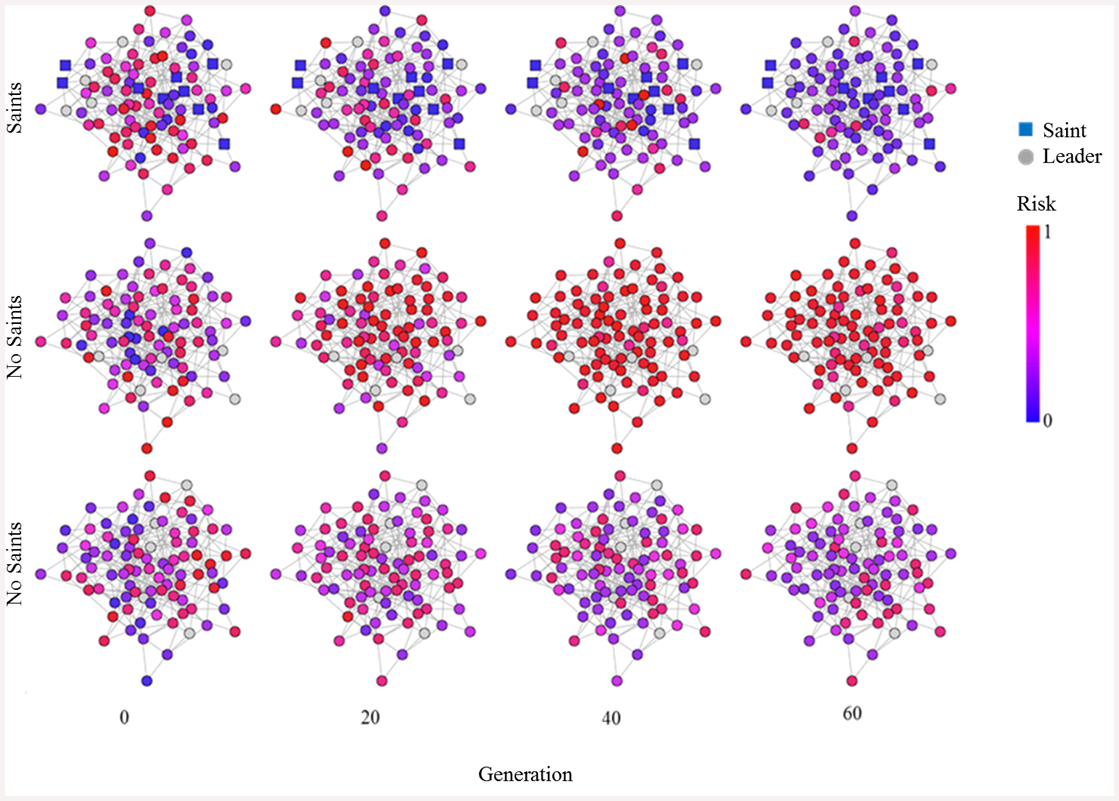
Modeling the Role of Networks and Individual Differences in Inter-Group Violence
Abstract
There is significant heterogeneity within and between populations in their propensity to engage in conflict. Most research has neglected the role of within-group effects in social networks in contributing to between-group violence and focused instead on the precursors and
consequences of violence, or on the role of between-group ties. Here, we explore the role of individual variation and of network structure within a population in promoting and inhibiting group violence towards other populations. Motivated by ethnographic observations of collective behavior in a small-scale society, we describe a model with differentiated roles for individuals embedded within friendship networks. Using a simple model based on voting-like dynamics, we explore several strategies for influencing group-level behavior. When we consider changing population level attitude changes and introducing control nodes separately, we find that a particularly effective control strategy relies on exploiting network degree. We also suggest refinements to our model such as tracking fine-grained information spread dynamics that can lead to further enrichment in using evolutionary game theory models for sociological phenomena.
Citation:
A. Isakov, A. Holcomb, L. Glowacki, and N.A. Christakis, "Modeling the Role of Networks and Individual Differences in Inter-Group Violence" PLoS One, 11(2): e0148314 (February 2016) http://dx.doi.org/10.1371/journal.pone.0148314